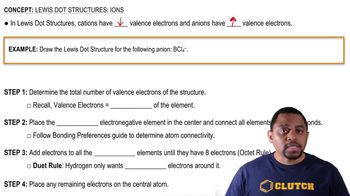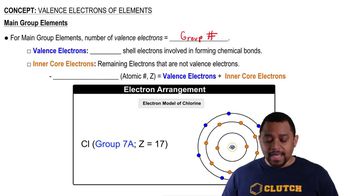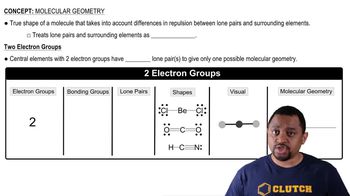Consider the following possible structural formulas for C3H6O2. If a structure is not reasonable, explain what changes could be made to convert it to a reasonable structure.
a.
 Verified step by step guidance
Verified step by step guidance Verified video answer for a similar problem:
Verified video answer for a similar problem:



 0:37m
0:37mMaster Lewis Dot Structures: Neutral Compounds (Simplified) Concept 1 with a bite sized video explanation from Jules
Start learning